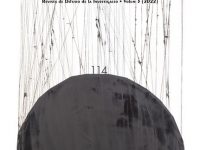How to learn from our mistakes
Communication of health crises
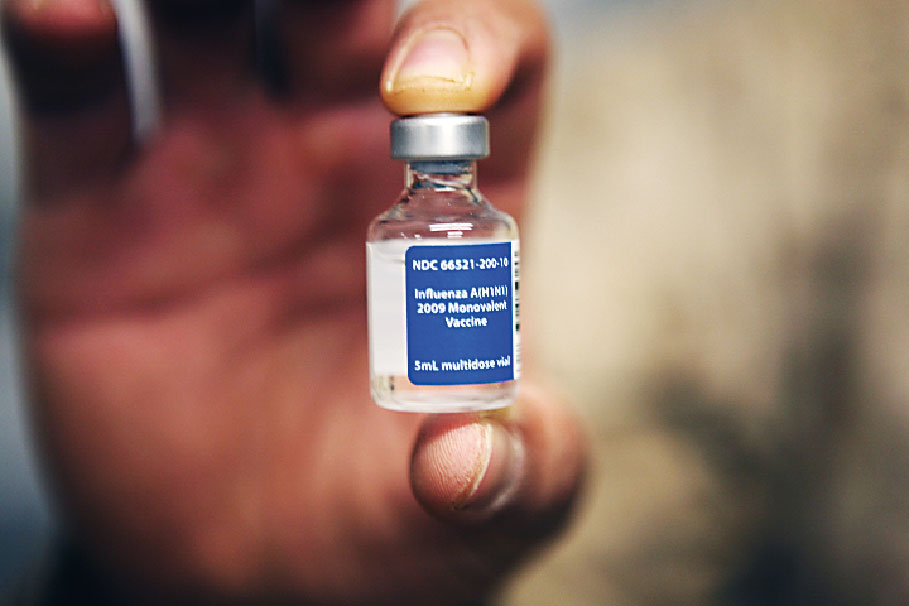
Reviewing public communications emitted during health crises in the last thirty years is useful for verifying that there are a number of repeated mistakes: for example, untrained spokespeople with poor communication skills, ambiguous messages, lack of communication plans for the crisis, and improvisation, which ends up with the transmission of alarming messages to the population and contributes to administrations being considered suspicious or untrustworthy by the people. The denatured rapeseed oil scandal, mad cow disease, influenza A virus, or the recent Ebola outbreak are clear examples of how not to communicate and offer us an opportunity to learn valuable lessons before future crises arise.
Keywords: health crises, communication of risk, mad cow disease, influenza A, Ebola.
Rapeseed oil, the minister and the little bug
Several batches of denatured rapeseed oil caused a mass poisoning that sparked a huge scandal in Spain in the early 1980s. As related by the court-specialist journalist José Yoldi (2004), the deception consisted of a group of unscrupulous businessmen who bought very cheap rapeseed oil in France and sold it in Spain as sunflower or olive oil. Because of the Spanish oil surplus, legislation only allowed rapeseed oil importation for industrial applications, and so in France they added aniline, a toxic product that also dyes the oil blue. In order to remove it, the businessmen subjected the oil to a high-temperature refining process that transformed the anilines into fatty acid anilides, which are very toxic.
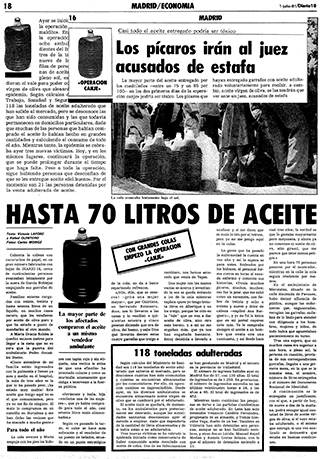
The first death was recorded on 7 May 1981, an eight-year-old from Torrejón de Ardoz (Madrid, Spain). The trickle of victims started to follow, with daily news in the media about the toxic syndrome that allegedly caused atypical pneumonia leading, in many cases, to death or to serious consequences such as paralysis and muscle atrophy. Due to unspecific nature of the symptoms, the wide spread of cases across the country (Madrid, Castilla-La Mancha, Castilla y León, Asturias, Galicia and the Basque Country) and the difficulty in finding the cause – a lot of people thought they were consuming olive or sunflower oil because of the way the product was labelled – the administration decided to stay silent, which contributed to increased public concern.
The crisis peaked on 21 May 1981, when the Minister of Work, Health and Social Security at the time, Jesús Sancho Rof, of the ruling UCD (Union of the Democratic Centre) party, appeared in front of cameras and uttered the legendary sentence claiming that the mass poisoning was caused by «a bug so small that it would die if it fell from a table». In this case, the Health Minister’s statement increased the population’s alarm and confusion. As reflected in the press coverage of the time (El País, 1981), rumour had it that bacteriological weapons had contaminated some fruits and vegetables which was causing the epidemic. Moreover, the first victim appeared near the United States military base in Torrejón, which helped to perpetuate this falsehood. The North American embassy had to deny that there were weapons of this type in Spanish territory and the sales of fruit and vegetables plummeted.
«The only positive aspect of this unfortunate story is that it laid the foundations for an epidemiological surveillance system»
On 9 June 1981, it was confirmed that denatured rapeseed oil was responsible and the General Director of Public Health at the time, Luis Valenciano, offered the first findings. These were confirmed in a very strange way: in cloistered convents, where nuns were using the supposed olive oil for ill sisters – who ended up intoxicated – but a different oil for the rest of the congregation, who were fine (El País, 1987).
The relatives of the deceased and the over 20,000 affected people initiated legal action that dragged on for over a quarter of a century (El médico interactivo, 2003). Many of their demands were not met and they are still demanding adequate treatment. The only positive aspect of this unfortunate story is that it laid the foundations for an epidemiological surveillance system to prevent similar events from happening again.
Mad cow disease, the Minister and the bones for broth
The next case occurred in the mid-1990s. The mad cow disease (also known as bovine spongiform encephalopathy) jumped into headlines in 1996, when the first case of a human affected by Creutzfeldt-Jakob disease, related to consumption of infected beef, appeared. The first case in animals had been detected eleven years before. Animals had been fed with scrapie, the crushed remains of brains, soft tissue and bones from sheep and goats, which caused prions – a protein that is also an infectious agent – to infect animals, which then jumped over to humans.
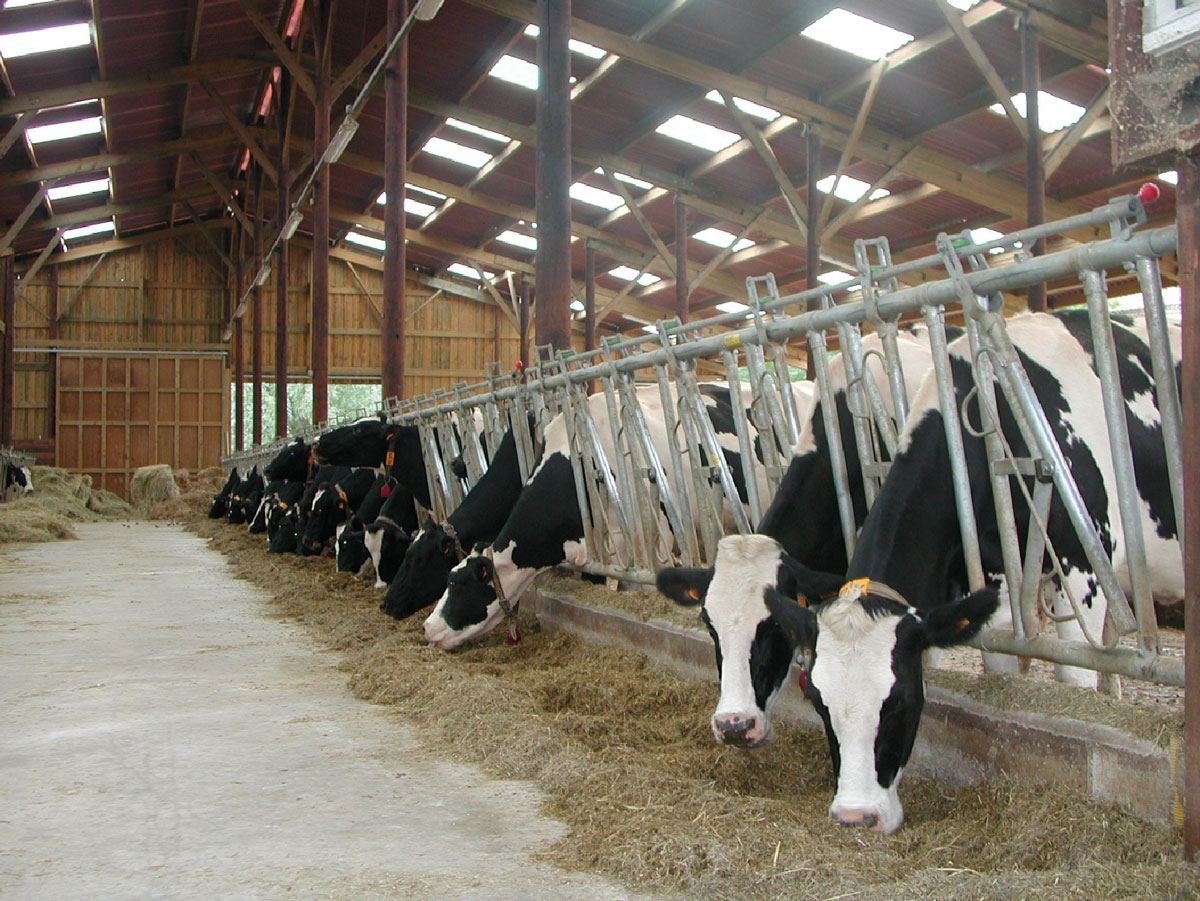
The mad cow disease (also known as bovine spongiform encephalopathy) jumped into headlines in 1996, when the first case of a human affected by Creutzfeldt-Jakob disease, related to consumption of infected beef, appeared. / Photo: Staff Sgt. Luis R. Agostin
Most of infections happened in the United Kingdom, but the trickle of cases was relentless in the late 1990s. Infected animals, or animals suspected of having been fed scrapie, started to be sacrificed. The first Spanish case appeared in November 2000, when the European Union started to ban the consumption of certain animal-based food products under the suspicion that they might cause the disease. The Minister of Health at the time, Celia Villalobos, contributed to the confusion with outlandish, poorly thought-out statements, like claiming it was «a problem of animal health» El Mundo, 2001). The peak of the crisis arrived on 8 January 2001, when, in a radio interview, the Minister recommended housewives not to use beef bones to make broth, saying that «…they are not sold anymore, use pork [bones] instead» (Sampedro, 2001). The meat industry’s reaction was devastating; they expressed disappointment at the social alarm caused by the Minister’s statements, and described them as nonsense. Eventually, the role the veterinarian Juan José Badiola played as a spokesperson in the crisis provided the calm required and contributed to finally reaching the public with reassuring messages. Villalobos resigned a year and a half later, on 10 July 2002.
In total, 224 primary cases (five of them in Spain) and three secondary cases (because of transfusions) were diagnosed in humans (University of Edinburgh, 2012), and millions of animals were sacrificed (Meikle, 2012), most of them in the United Kingdom. Livestock restrictions lasted for over a decade.
Influenza A, wrong messages from the World Health Organization
On 11 June 2009, the World Health Organization (WHO) categorised the influenza A epidemic (H1N1) as a phase 6 pandemic (World Health Organization, 2009). In March the press had already extensively covered the first cases of this swine flu that had mutated and started infecting humans. When the first death occurred in April, media interest increased, and their coverage peaked when WHO communications caused global mass hysteria: their calculations projected up to 150 million dead. Around 19,000 people eventually died (EFE, 2010), about 400 of them in Spain, whereas seasonal flu causes around 250,000 deaths a year around the world, 8,000 of them in Spain (Ambrojo, 2010).
The General Secretary of the Ministry of Health at the time, José Martínez Olmos, published a book in 2014 in which he reviewed the experience. Despite the fact that experts expected the disease to have a high incidence, the vaccine purchase in Spain for 20% of the population was «prudent», while other countries chose to buy doses for every citizen (Martínez Olmos, 2014). Finally, the expenditure – 300 million euros in Spain – proved to be useless and six million vaccines had to be destroyed (Abc, 2014).
According to Martínez Olmos, the WHO’s communication was bad, with excessive alerts – especially the sentence of their Director-General, Margaret Chan, stating that all humanity was under threat – that reached international organisations through unofficial channels like the press or social networks (Caylá, 2009) and which caused huge spending around the globe. Another criticised aspect was the poor coordination between European countries, which missed the opportunity to make a centralised purchase of vaccines. This caused countries such as Poland to have no vaccine, which could have led to a very serious health problem had the epidemic turned out to have been more aggressive.
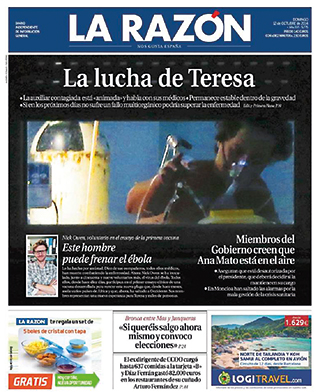
Ebola, an institutional mess
Perhaps the most unfortunate case in recent times was communication management during the case of Teresa Romero, the Spanish nursing assistant infected with Ebola after treating the missionary Manuel García Viejo, who had been infected in Africa. Thus, in October 2014 Spain became the first country with a case of infection outside the African continent. The National Association of Health Journalists (Asociación Nacional de Informadores de la Salud; ANIS) analysed the many mistakes made during their XI conference in April 2015, and provided a number of examples of how not to communicate (ANIS, 2015).
The patient, upon feeling the first symptoms, went to her family doctor, who sent her back home. Her condition started to worsen, so she went to the Alcorcón Foundation University Hospital in Madrid, where a blood analysis confirmed the Ebola diagnosis on 6 October 2014. The result of the test quickly leaked to the press and the doctor who treated her learned about it when he turned on the TV to watch the afternoon news.
However, the event that started the crisis was the Ministry of Health’s press conference at eight o’clock that evening, with verbal and non-verbal communication that transmitted fear and concern to the population. The press conference started half an hour late because they could not find the key to the sound table room, and this sparked an argument between the different Ministry officials and further increased tension and nervousness. Despite Spain having a crisis plan and an action protocol to fight pandemics (that was created after the influenza A crisis and could have easily been adapted), it was not used. Furthermore, the format of the conference, with seven speakers with nothing to say, contributed to building a panic scenario, reflected in social media with the hashtag #vamosamorirtodos [we are all going to die].
In contrast, the communication team at the La Paz-Carlos III University Hospital where Teresa Romero was transferred to and treated, put their effort into reassuring the population and avoided raising the alarm (Rodríguez Andrés, 2011), by regularly giving media press-conferences. A Whatsapp group was even created so that any journalist interested could receive the updates and news from the press office.
Meanwhile, Madrid’s regional government and the Ministry of Health kept passing the buck to each other, and even organised press conferences at almost the same time as each other but then cancelled them, which puzzled journalists even more. We can find another example of poor communication from an institutional spokesperson in an offensive statement given by the regional government’s health advisor, Javier Rodríguez, which finally forced him to resign.
The sensationalism of the media deserves a special mention as well. On the one hand, because of the way they covered the news that Excalibur, the patient’s dog, had to be sacrificed because of the suspicion he had also been infected with Ebola; on the other hand, journalists and pundits with no healthcare training or knowledge of the issue debated for hours about whether the viral infection occurred because of an infected glove.
«Perhaps the most unfortunate case in recent times was communication management during the case of Teresa Romero, the nursing assistant infected with Ebola»
The list of mistakes was enormous. Once the name of the patient leaked, her mother, who lived in a Galician village in the province of Lugo, in the north of Spain, was harassed. Another of these mistakes was that obituaries were prepared in advance – because it was assumed that the patient would die imminently – and were published by mistake on several national media websites, including COPE (who later denied it on Twitter) or Elcorreo.com (who repeated news agency information). The newspaper El Mundo also published an op-ed by Santiago González titled Un país algo raro (“Quite an unusual country”), which described the event as «the imminent death» (González, 2014).
ANIS published an announcement (ANIS, 2014a) asking healthcare officials to offer as much information as possible with complete transparency and veracity, to avoid rumours and contradictory messages, to provide adequate expert voices, to respect the privacy of the patient, her family and environment, and to listen to their health communication experts.
In addition, they asked the media to offer rigorous and verified information, to avoid unfounded rumours and speculation, to select expert sources as communicators, to respect the privacy of those affected, and to put healthcare professionals in charge of the information during the crisis.
In these troubled times, charlatans of all kinds emerged trying to sell their magical remedies to cure Ebola with rectal ozone therapy, sea water, oregano oil, medicinal herbs or harmful chlorine by-products. A helpful article in El País reported the situation (Salas, 2014). Another example of great journalism was Carlos Alsina’s monologue on the radio station Onda Cero, titled Historia de este brote de ébola (“The history of this Ebola outbreak”) (Alsina, 2014).
After four days of confusion, on Friday 10 October the Vice-President of the Spanish Government, Soraya Sáenz de Santamaría, took control of the crisis and named Fernando Simón, an expert on the issue and not a politician, as the spokesperson for the special committee. His composure, knowledge and cautious messages contributed to appeasing both the press and the public.
However, mistakes continued from the journalistic point of view, with a cover of El Periódico de Cataluña on 10 October in which the patient could be seen in her hospital room. The picture was a screenshot taken from a monitor watching the patient, and its use was even justified by the newspaper’s director (Hernández, 2014). Several paparazzi took photographs of the patient’s room from the building across the street from the hospital, which ended up on newspaper covers such as that of Abc on 12 October. To prevent the press from taking more photographs, the shutters on Teresa Romero’s room were lowered, a decision which was criticised by her healthcare professionals, because it made their work more difficult. Other media such as El País, published pictures online, but then had to remove them and subsequently apologise.
On 13 October, ANIS published a second announcement, regretting the appearance of these pictures «without her consent and with the pictures being unnecessary for providing information about the process, as they bring no new information and violate the patient’s right to privacy. Nothing justifies the dissemination of these pictures, which threaten the nursing assistant’s privacy, as well as the privacy of the professionals who take care of her» (ANIS, 2014b).
The announcement also insisted that journalists must know that the right to privacy prevails over the right to information in our legal system: in the year 2000 the Constitutional Court was very emphatic on the limits of the right of information regarding individual’s private lives. ANIS’s statement was based on the fact that the fundamental right to privacy recognised by Article 18.1 of the Constitution tries to guarantee an area of individuals’ lives related to respect for their dignity as a person and protect them against the action and knowledge of others. For this reason, no one can be required to passively bear the disclosure of real or alleged information about their private, personal or family life.
The last episode in this shameful communication crisis was the proliferation of hoaxes on social networks, with fake screenshots from prestigious media outlets informing readers about a second Ebola outbreak (sic) in a hospital in Denia (Spain), that the first victim had been registered in the Vallecas district in Madrid or that the maximum state of alert had been decreed in south Madrid and in the district of El Pilar, which were controlled by the army.
If we do not change the way we act, we will live through more phenomena of this kind. For instance, only this year, the WHO’s communication policy was once again questioned because of ambiguous messages on the matter of processed red meat and its connection to cancer. The specialisation of the press and, above all, putting common sense and rigour over sensationalism are the solutions required to prevent errors like these in the future.
References
Abc. (2014, 1 October). Martínez Olmos: «La OMS tiene que rendir cuentas de la gestión de la gripe A». Abc. Retrieved from http://www.abc.es/sociedad/20141001/abci-martinez-olmos-tiene-rendir-201409302148.html
Alsina, C. (2014, 14 October). Historia de este brote de ébola. Onda Cero: El monólogo de Alsina [Audio Podcast]. Retrieved from http://blogs.ondacero.es/alsina/historia-este-brote-ebola_2014101300315.html
Ambrojo, J. C. (2010, 13 February). ¿Qué pasó con la gripe A? El País. Retrieved from http://sociedad.elpais.com/sociedad/2010/02/13/actualidad/ 1266015601_850215.html
Asociación Nacional de Informadores de la Salud (ANIS). (2015, 10-12 d' abril). XI Congreso ANIS – Debate sobre la gestión de la crisis del Ébola. Oviedo. Retrieved from https://www.youtube.com/watch?v=sJ_XUfDJmnQ
Asociación Nacional de Informadores de la Salud (ANIS) (2014a, 8 October). Comunicado de ANIS con motivo de la crisis del ébola en España. Retrieved from http://www.anisalud.com/es/actualidad/noticias-anis/comunicado-de-anis-con-motivo-de-la-crisis-del-ebola-en-espana
Asociación Nacional de Informadores de la Salud (ANIS). (2014b, 13 October). Comunicado de ANIS con motivo de la crisis del ébola en España. Retrieved from http://www.anisalud.com/es/actualidad/noticias-anis/comunicado-de-anis
Caylá, J. A. (2009). Epidemias mediáticas, una reflexión para la salud pública. Gaceta Sanitaria, 23(5), 362–364. doi:10.1016/j.gaceta.2009.09.002
Efe. (2010, 10 August). La OMS anuncia el fin de la pandemia de la gripe A. Efe. Retrieved from http://web.archive.org/web/20100815092520/http://www.google.com/hostednews/epa/article/ALeqM5gru2hHaWKFOq5W3vj3-QyaU-Zl8g
El médico interactivo. (2003, 10 January). Historia y evolución del síndrome del aceite tóxico (S.A.T.). El médico interactivo. Retrieved from http://www.elmedicointeractivo.com/ap1/emiold/biblio/rbcn45.htm
El Mundo. (2001, 9 January). Las frases de Celia Villalobos. El Mundo. Retrieved from http://www.elmundo.es/elmundo/2001/01/09/sociedad/979044100.html
El País. (1981, 22 May). Se desconoce aún el origen de la epidemia de neumonía atípica. El País. Retrieved from http://elpais.com/hemeroteca/elpais/portadas/1981/05/22
El País. (1987, 13 March). La ensalada de las monjas. El País. Retrieved from http://elpais.com/diario/1987/03/13/espana/542588407_850215.html
González, S. (2014, 10 October). Un país algo raro. El Mundo.
Hernández, E. (2014, 10 October). Cinco razones para publicar la fotografía de Teresa Romero. El Periódico de Cataluña. Retrieved from http://www.elperiodico.com/es/noticias/opinion/cinco-razones-para-publicar-fotografia-teresa-romero-contagiada-ebola-hospital-carlos-madrid-3590271
Martínez Olmos, J. (2014). ¿Qué pasó con la gripe A? Retrieved from http://www.quepasoconlagripea.com
Meikle, J. (2012, 25 April). Mad cow disease – a very British response to an international crisis. The Guardian. Retrieved from http://www.theguardian.com/uk/2012/apr/25/mad-cow-disease-british-crisis
Rodríguez Andrés, R. (2011). La efectividad del uso del miedo como factor persuasivo en la comunicación de riesgos en las crisis sanitarias. Revista de Comunicación y Salud, 1(2), 33–46.
Salas, J. (2014, 8 October). Los charlatanes del ébola. El País. Retrieved from http://elpais.com/elpais/2014/10/08/ciencia/1412761885_930208.html
Sampedro, J. (2001, 9 January). Villalobos desaconseja el consumo de caldo de vaca. El País. Retrieved from http://elpais.com/diario/2001/01/09/sociedad/978994806_850215.html
Universitat d'Edimburg. (2012). Variant Creutzfeldt-Jakob disease current data (july 2012). Retrieved from https://web.archive.org/web/20120721234746/http://www.cjd.ed.ac.uk/vcjdworld.htm
World Health Organization. (2009). El nivel de alerta de pandemia de gripe se eleva de la fase 5 a la fase 6. Retrieved from http://www.who.int/mediacentre/news/statements/2009/h1n1_pandemic_phase6_20090611/es
Yoldi, J. (2014). Peor habría sido tener que trabajar. Madrid: Libros.com




